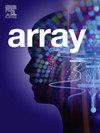Hybrid weakly supervised learning with deep learning technique for detection of fake news from cyber propaganda
Abstract
Due to the emergence of social networking sites and social media platforms, there is faster information dissemination to the public. Unverified information is widely disseminated across social media platforms without any apprehension about the accuracy of the information. The propagation of false news has imposed significant challenges on governments and society and has several adverse effects on many aspects of human life. Fake News is inaccurate information deliberately created and spread to the public. Accurate detection of fake news from cyber propagation is thus a significant and challenging issue that can be addressed through deep learning techniques. It is impossible to manually annotate large volumes of social media-generated data. In this research, a hybrid approach is proposed to detect fake news, novel weakly supervised learning is applied to provide labels to the unlabeled data, and detection of fake news is performed using Bi- GRU and Bi-LSTM deep learning techniques. Feature extraction was performed by utilizing TF-IDF and Count Vectorizers techniques. Bi-LSTM and Bi-GRU deep learning techniques with Weakly supervised SVM techniques provided an accuracy of 90% in detecting fake news. This approach of labeling large amounts of unlabeled data with weakly supervised learning and deep learning techniques for the detection of fake and real news is highly effective and efficient when there exist no labels to the data.
| 公司名称 | 产品信息 | 采购帮参考价格 |
|---|

 求助内容:
求助内容: 应助结果提醒方式:
应助结果提醒方式:


